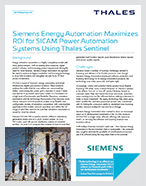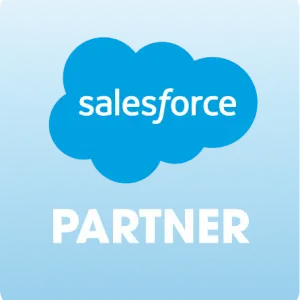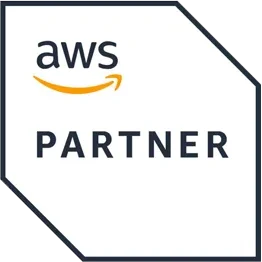Over the past number of years, the world has stopped thinking of software as a product and moved towards the concept of Software as a Service (SaaS). We think of our digital assets not as something we own or acquire, but something that we access.
One of the key elements of this is entitlements – the agreements that define the limitations and rights of software access.
What is an Entitlement?

When you're figuring out how to keep track of assets in this new climate, the first question is what is an entitlement in software asset management? In technological fields, and specifically, software technology, an entitlement is the specific rights and access a user has to products, software, or applications. Another, more familiar term for this is a software licensing agreement.
What is an Entitlement Management System?
While entitlements are a straightforward concept, they are also a complex, vital part of the organization of the digital world. They are the property rights of the virtual universe. As a company, you want to know who has access to your data, your software, and your applications – your property. If you owned a building, you might need a property manager to organize the who, how, and when of entitlements and access. For software, a software license entitlement management system is that property manager.
So what is an entitlement system? Software license entitlement management is a technology that tracks, administers, and grants and revokes access entitlements – also known as licensing agreements, access rights, or privileges – from one, centralized interface. It streamlines IT policies having to do with entitlements, managing licensing renewal, workflow, and data access for various platforms, applications, and devices.
What Can A Software License Entitlement Management System Do For Me?

In today’s world, as Covid 19 has pushed many companies and organizations to institute remote work, Cloud computing and Software as a Service (SaaS) have become more important than ever. This isn’t always a good thing. Operations aren't centralized in a physical location, and software, applications, and data can be accessed across platforms, systems, devices and networks. This can reduce efficiency, lead to data security issues, and make it difficult to optimize monetization. You can overcome these challenges however, by centralizing and streamlining entitlement access and asking what is a software entitlement management system that will work for you.
When asking "what is an entitlement management system?", you'll need to understand some basic principles. The definition of entitlement management begins with the principle of least access. This means that only authorized users have access to software, resources, data or applications. However, these strict limits do not inhibit efficiency. Instead, entitlement access packages make it possible for you to streamline the entitlement process. They give you the power to define authorized users and what they have access to, grouping them by identity, role, group, or project. By automating parts of the software operation processes, such as identity lifecycles, upgrades, and notifications, you can streamline IT policies with minimal fuss.
Your software license entitlement management system also supports your monetization process. It lets you track the software people are using, and on which devices. With that information, you can easily centralize and simplify compliance management, institute stronger customer growth strategies, and deploy a wider variety of monetization models.
How Does it Work? Examples of Entitlement Management
Let’s say you need to develop an entitlement management system for a company with a workforce of 100 employees, all working remotely on a Software as a Service system. Using one central interface you can create different licensing and access packages for employees with varying needs based on their rank or role in the company. Within this system, it is easy to manage lifecycles, make changes to software as the market changes, and set up automated usage analytics. You can use the data to track compliance, accelerate growth, and manage renewals.
So now both administrators and non-administrators in this company can grant and revoke access based on roles, identities, or projects while maintaining data security. In addition, the company can easily collaborate with users outside of the organization because software license entitlement management makes it possible for outside users to request access to licensed resources for a specific amount of time. Once the access lifecycle has ended, those users will return to being outside users once again. Similarly, employees can easily and efficiently move within the organization as needed. They can be added to groups or roles for a given lifecycle and gain access to licensed software or applications with little to no IT involvement. This can all be done from a centralized interface, regardless of physical location, and across multiple user devices.
As an employee, an entitlement management system smooths the way for entrance into an organization or a particular role within it. Without much fuss, employees can be given an identity, and along with that identity, all the access to the licensed software, applications and data they require to do their job effectively.
For example, let's say a developer within the company is working on a project with the R&D department. The developer can join the R&D group and be given additional software rights simply by requesting access from their administrator. They can now use all the tools and applications they need to work on the project even though they are not a permanent member of the R&D department. When the project is over, the IT department doesn't need to worry about revoking those rights. Lifecycles are built in, and access to licensing rights is automatically revoked at the end of the lifecycle.
So for this company, software entitlement management makes it possible to more efficiently manage their user access in this new, nomadic world. IT policies can be implemented, and workflow can be streamlined from one centralize interface, all while sensitive data and licensing rights are protected.
All the more so for an organization with thousands of users, including both employees and outside collaborators.
Entitlement Management Best Practices
Now that you understand the importance of an entitlement management system, you can start thinking about how to implement it.
Determine the Scope
The first thing you need to do when instituting an entitlement management system is to determine the scope of the project. What are the organization’s needs? How many employees work within the organization, and how is the organization structured? What sort of access packages and software licensing agreement systems fit best? Can the employees be organized into smaller groups based on either role, identity, or access rights? What services does the company offer, and how can you make it easier for it to offer those services?
Take Stock
In order to create the system, develop a list of the company’s employees, their roles, and their licensing needs. Take note of the type of data and the various entitlements that are already being protected by the entitlement management system. What type of data is the company working with? What needs to be protected via entitlements: the rights to software? Directories? Billing? How can licensing management software help secure that data?

Survey Current Access Rights
Audit resource access: survey the various groups and identities to see how the organization currently manages access and entitlements. Who has access to what and in what configuration? What needs to change in order for the entitlement management system to work in the most efficient and secure way possible?
Define Workflow and Licensing Parameters
There are potentially an unlimited number of access configurations within a given entitlement management system. They key to finding the right ones is understanding the needs of the company. One of the advantages of a software management system is that you can determine your own workflow and define various workflow packages based on it. How is the company structured, and how does that effect the way people work? Do employees tend to stay within their departments, or is the company more dynamic? What type of management culture does the company cultivate?
For instance, you can create a request and approval system that is user entitlement friendly, meaning that it optimizes efficiency within an organization, or you can implement specific lifecycles within various licensing agreements, based on roles or identities. All of this depends on both internal IT policies and the licensing entitlement rights you have available.
Implement
Once you have completed the above steps, you are ready to implement an entitlement management system. You have the tools to successfully create a better, more efficient and lucrative organization.
Strong Entitlement Management is the Key to Smooth IT Operations
An effective software entitlement management system is vital for all organizations, big or small. It makes navigating the world of Software as a Service less daunting, from both a data security and organizational perspective, and streamlines IT policies for a stronger, healthier and more financially robust organization.
For more information about software entitlement management and how we can help you manage your software use, have a look at Thales' Sentinel Entitlement Management System.

Create Recurring Revenue with Software Licensing - White Paper
Higher Revenue, Happier Customers Part 1: Creating a Software Licensing Win-Win with Recurring Revenue: We live in a customer-centric, software and services-focused world. Customers are now driving decision making, and they increasingly expect immediate access and value...

Embrace Flexible Software Licensing Protection Like Siemens - Case Study
Improve Profits & Embrace Flexible Software Licensing Protection Like Siemens - Case StudySiemens Energy Automation Maximizes ROI for SICAM Power Automation Systems Using Thales SentinelEnergy substation automation is a highly competitive market with many global players....



